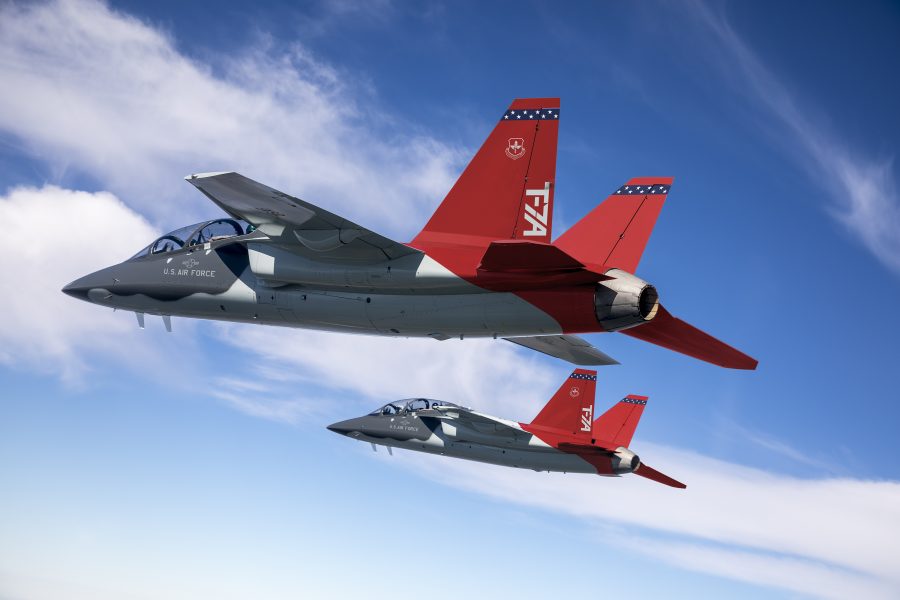Boeing is building the first two weapon systems trainers and an operational flight trainer for the new T-7A Red Hawk advanced training aircraft at its St. Louis, Mo., facilities, the company said Dec. 1. When completed, the devices will equip initial T-7A cadre units at Joint Base San Antonio-Randolph, Texas, in 2023.
The Air Force has ordered 46 simulators and associated ground equipment, but under the initial T-7A contract funding, it will buy seven simulators. The T-7A is a package training system comprised of supersonic trainer aircraft, simulators, and courseware.
The devices can digitally connect with in-flight aircraft and enable live, virtual, constructive (LVC) and embedded training. The flight trainer is identical to crew stations in the actual T-7A aircraft, and student pilots will be able to rehearse virtually any technique on the ground before performing it in the air.
The simulators have high-fidelity visual systems with 8K projectors, which translate to 16 times the clarity of traditional high-definition video. They are also equipped with “dynamic motion seats,” which simulate vibrations and acceleration cues. The simulator itself does not move on hydraulic struts as some other simulators do, however.
A Boeing spokesman said that in addition to the weapon system trainer and operational flight trainer, the company is building part-task trainers that “create a dual-desktop training environment, which uses the same high-fidelity simulation as the WST.”
The T-7A and its associated simulators is the centerpiece of Air Education and Training Command’s “Pilot Training Next” initiative, as well as Air Combat Command’s “Reforge” overhaul of fighter pilot training.
The simulators and aircraft all employ open mission systems architecture, allowing software updates to be routinely and competitively developed. Boeing said it will be upgrading the system using “one push” software updates, meaning the aircraft and simulators will all receive identical software updates simultaneously. What a pilot sees in the classroom, sim, or desktop trainer will always match what he sees in the aircraft, T-7A training and sustainment director Sherri L. Koehnemann said in a press release. “Future pilots can expect more holistic, immersive training,” she added.
Boeing’s T-7A contract, awarded in 2018, calls for a purchase of 351 tandem-seat trainer aircraft and 46 simulators, but the Air Force can purchase up to 475 aircraft and 120 sims. Initial operational capability with the T-7A is expected in 2024, while full operational capability is set for 2034. As the T-7A fleet delivers, the Air Force will continue to fly the T-38 Talon in the advanced training role for fighter/bomber-tracked pilots.
Air Combat Command has said it will consider the T-7A as the basis for Aggressor and light strike missions, as well, but the T-X competition won by Boeing did not award any credit for suitability in those missions. ACC is also evaluating a number of T-X competitors for a short-term lease to explore the Reforge fighter training program.
